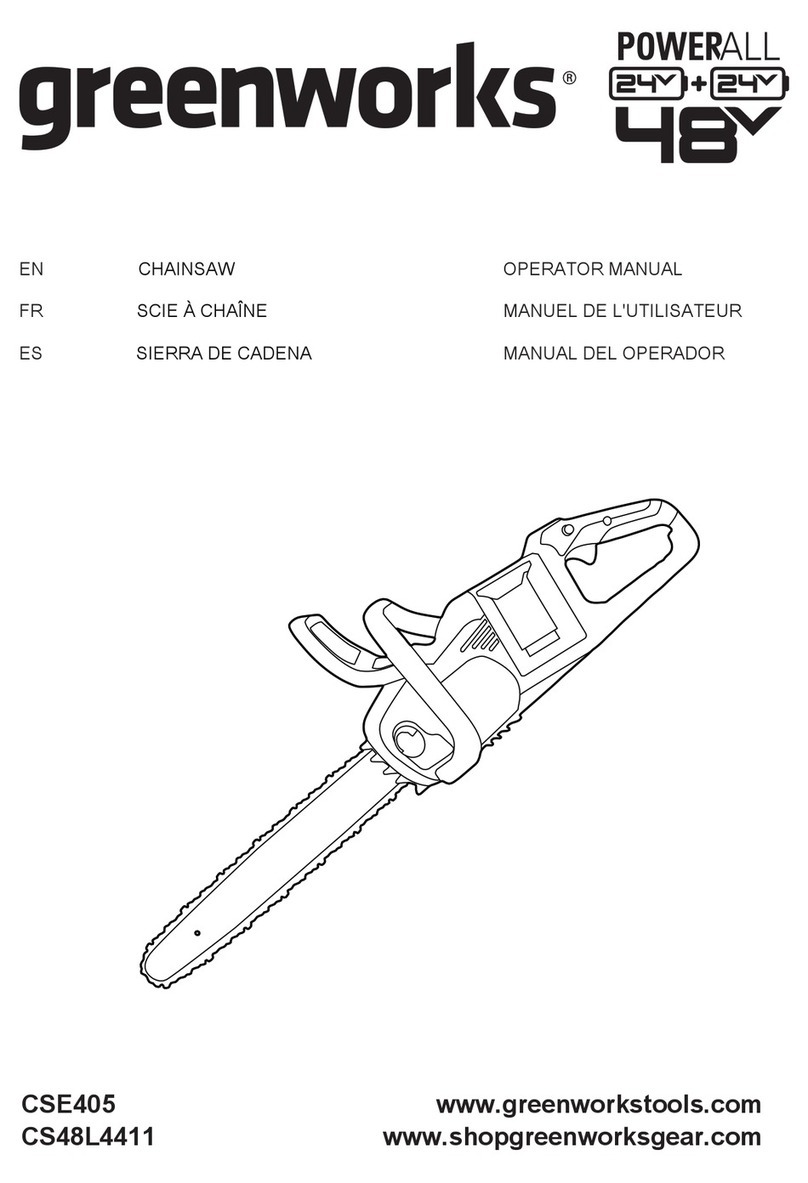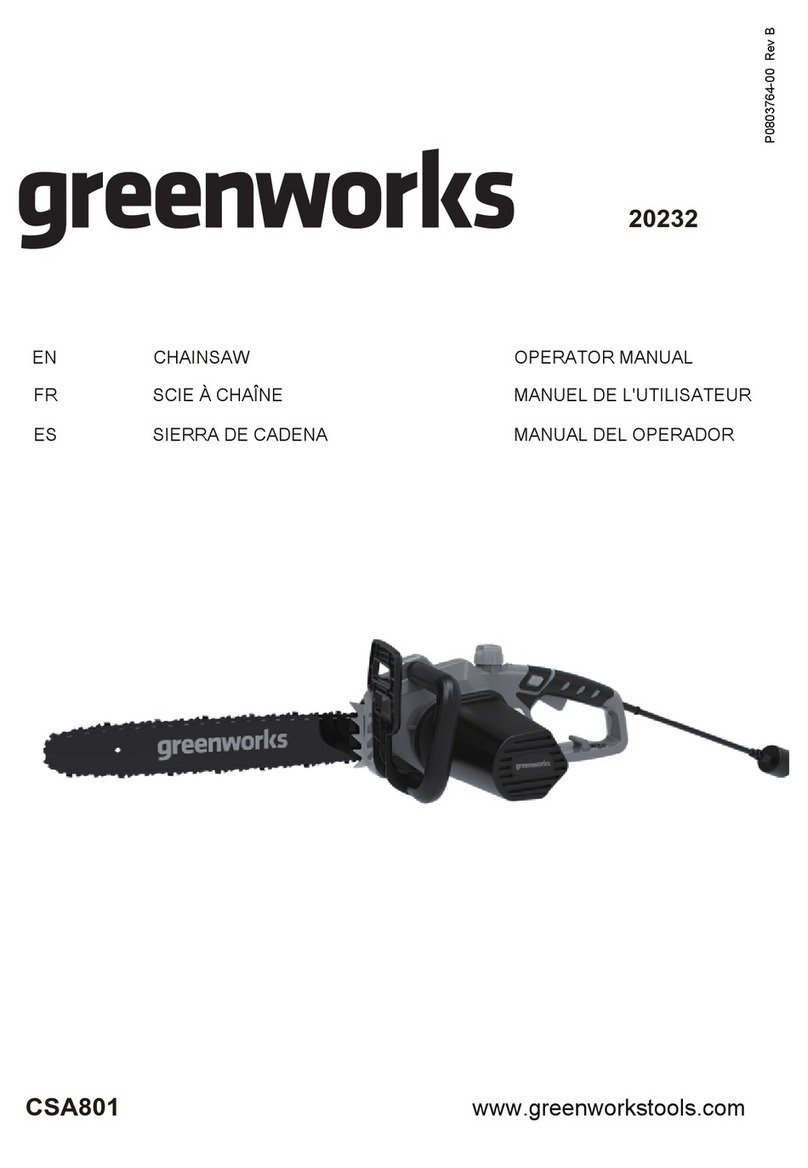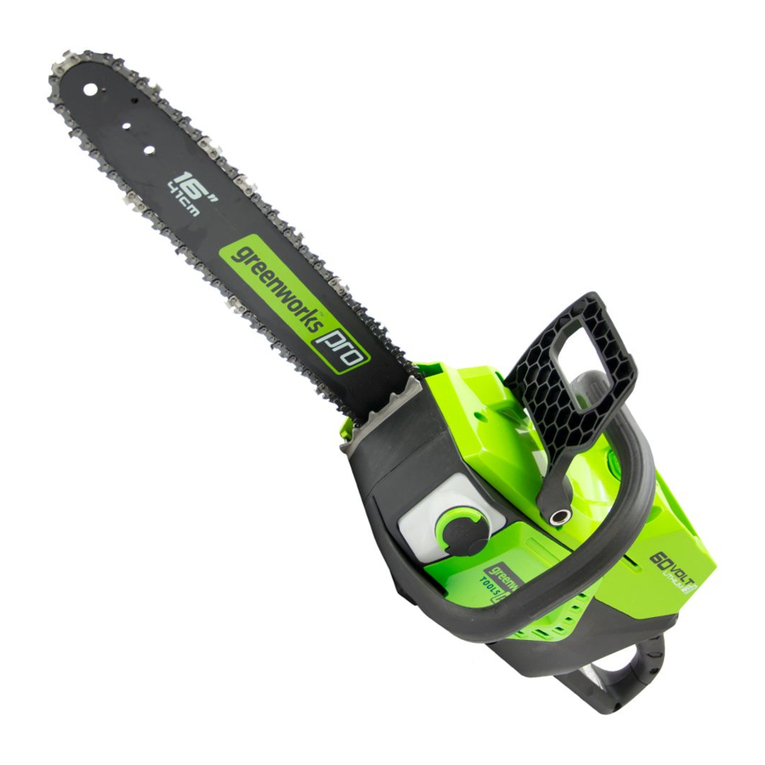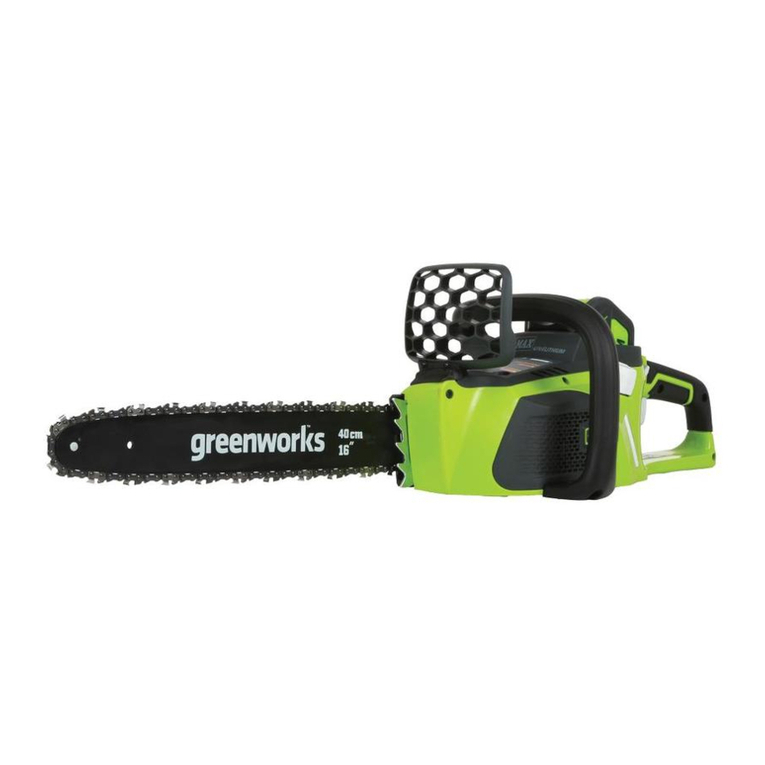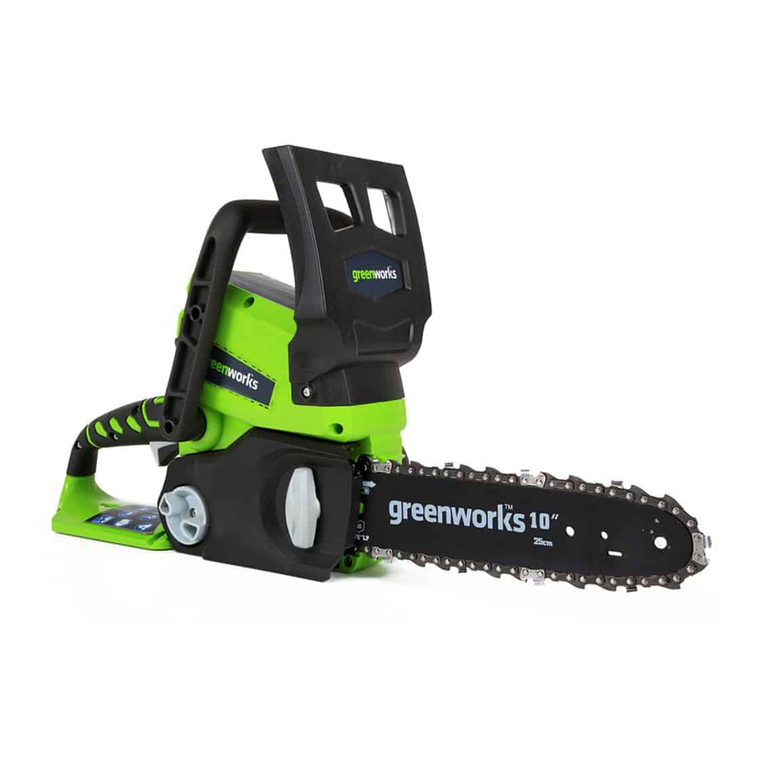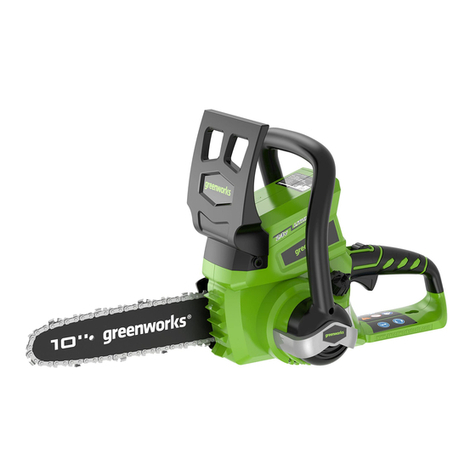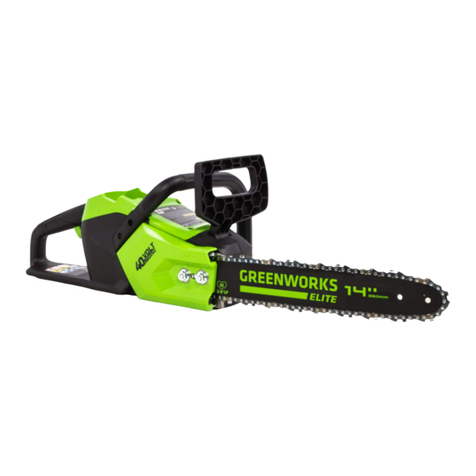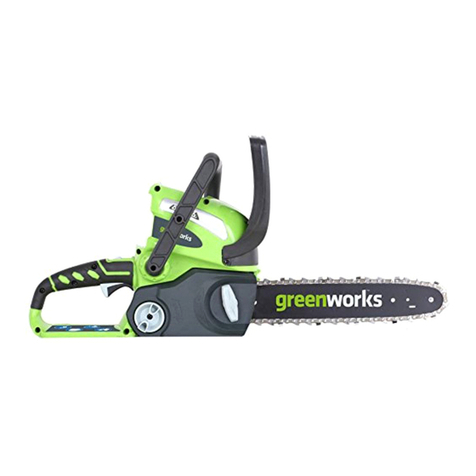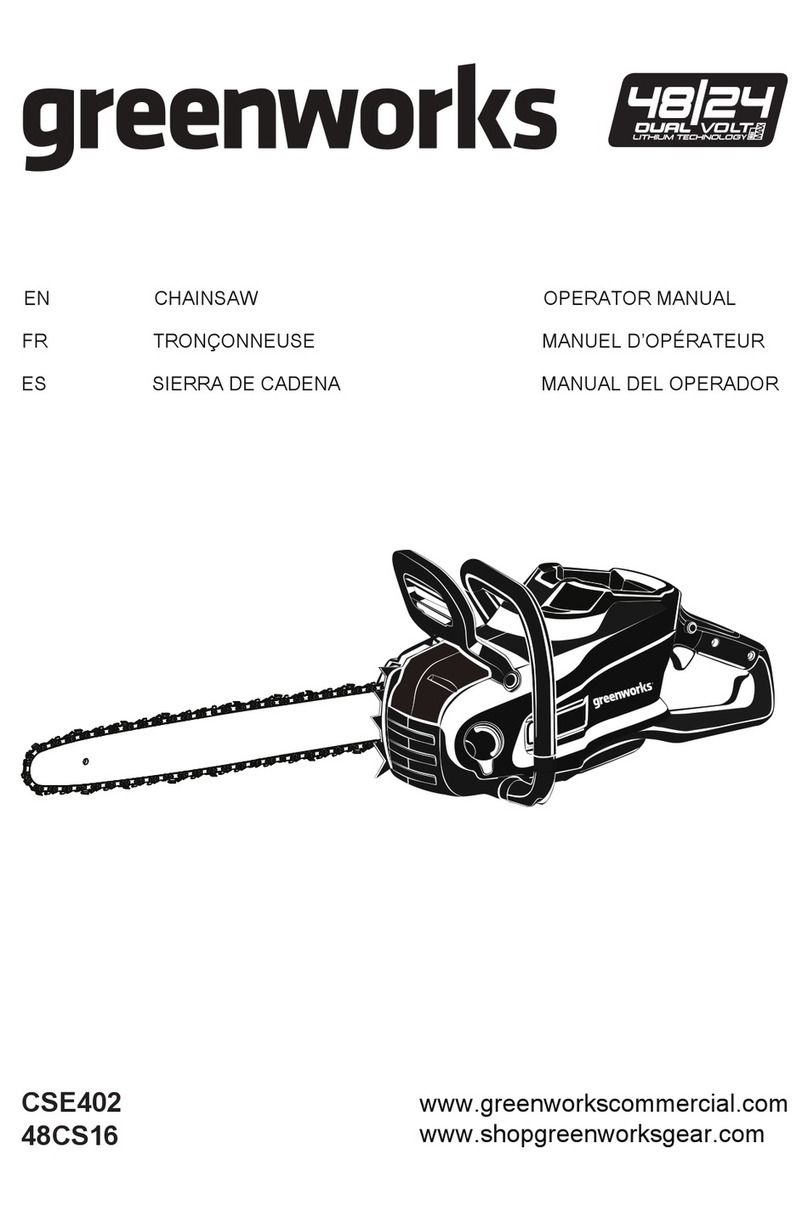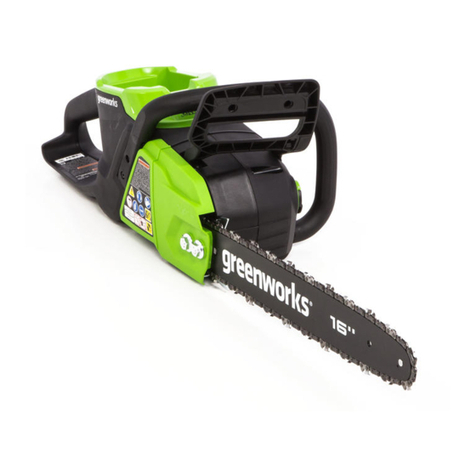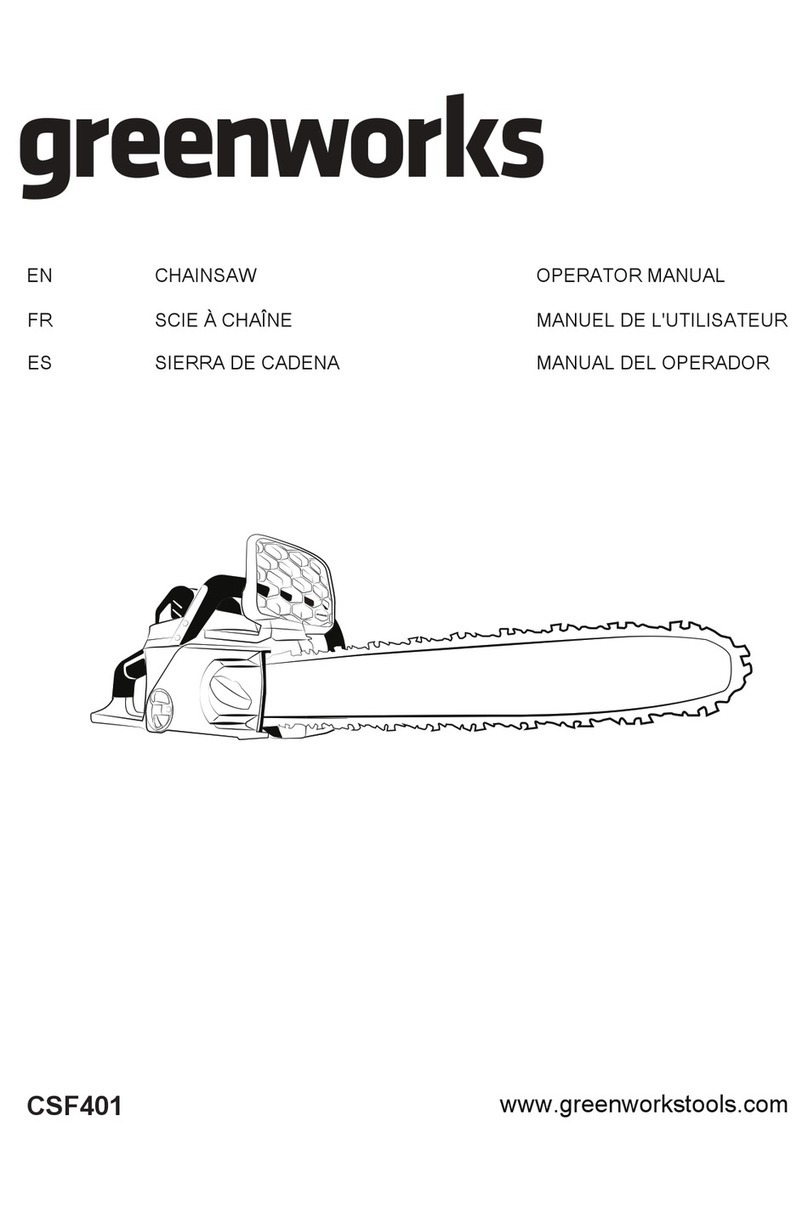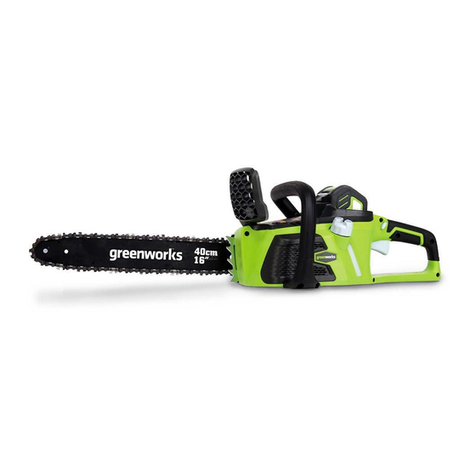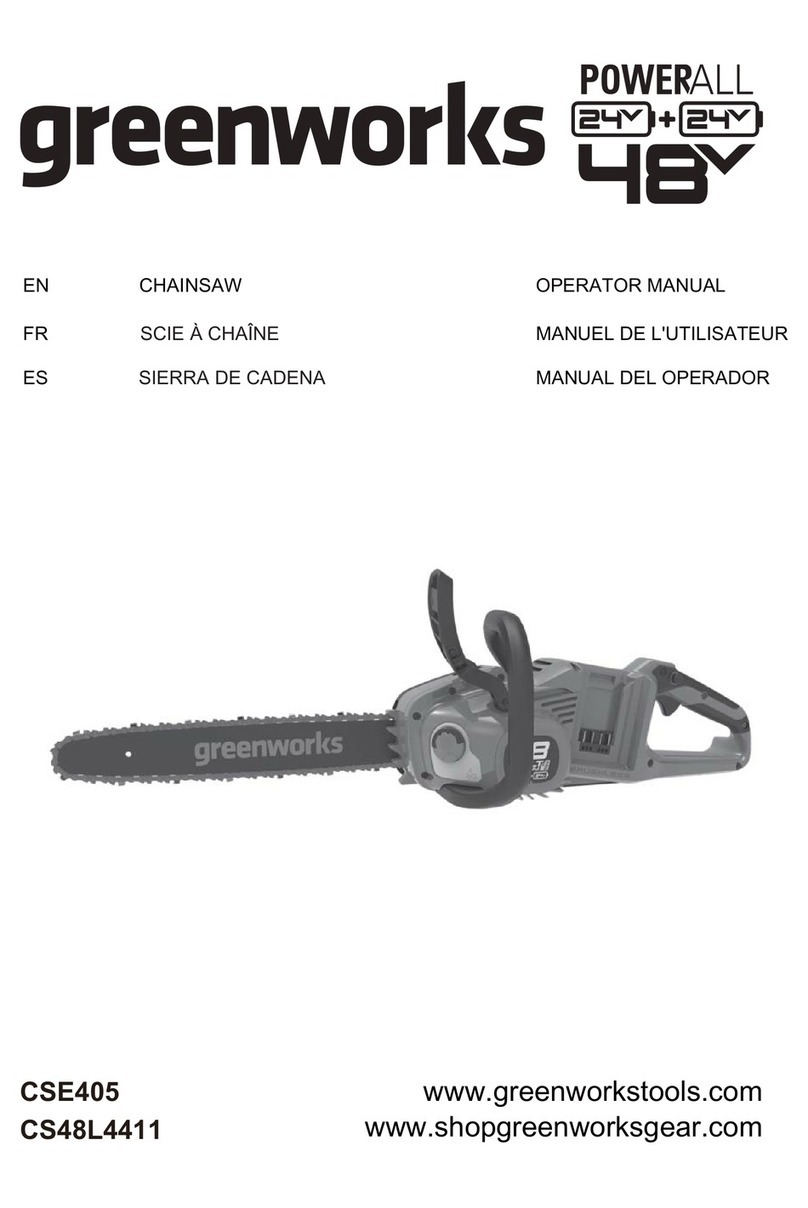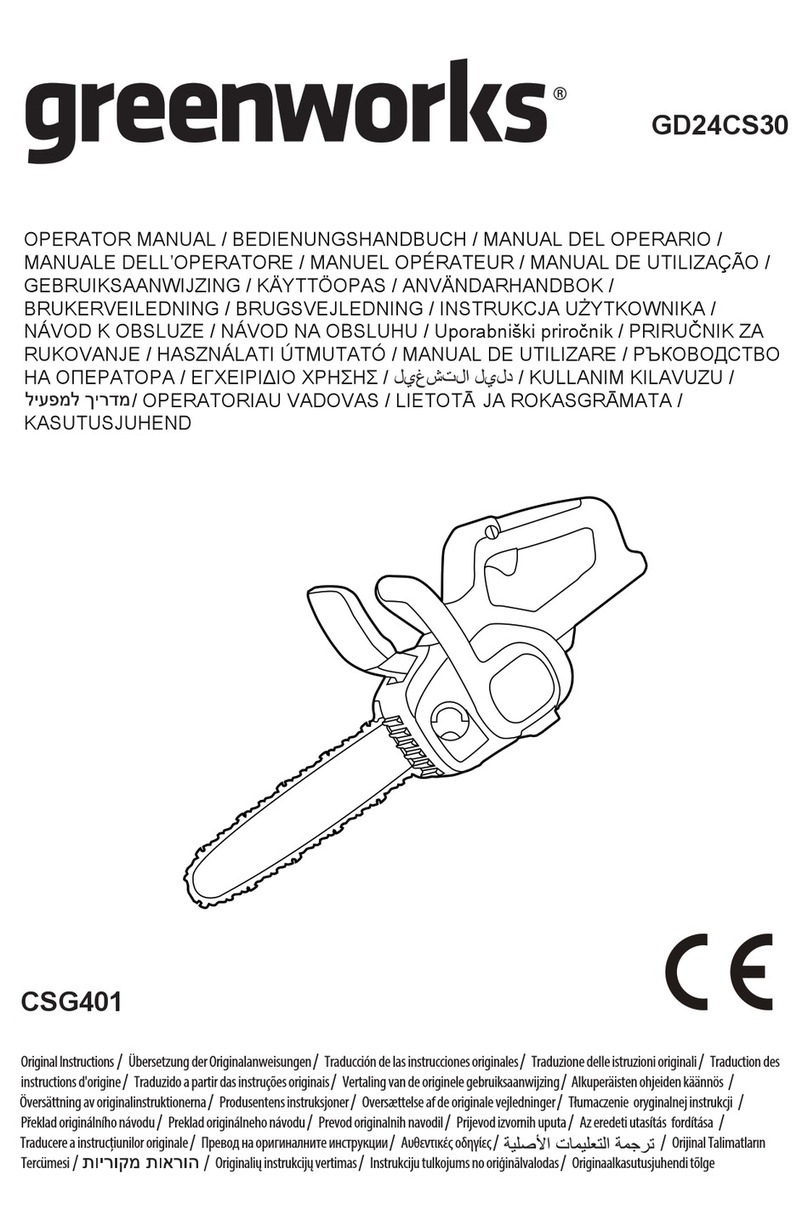
4
• Do not dispose of batteries in a re, the cell may explode, check with local codes
for possible special disposal instruction.
• Do not open or mutilate the batteries; released electrolyte is corrosive and may
cause damage to the eyes or skin, and may be toxic if swallowed.
• Exercise care in handling battery in order not to short the battery with conducting
material such as rings, bracelets and keys. The battery or conductor may overheat
and cause burns.
• Do not operate a chain saw with one hand. Use a rm grip with thumbs and
ngers encircling the chain saw handles. Serious injury to the operator, helpers,
bystanders, or any combination of these persons may result from one-handed
operation. A chain saw is intended for two handed use.
• Avoid body contact with grounded surfaces such as metal pipes and wire fences.
There is an increased risk of electric shock if your body is grounded.
• Do not operate a chain saw that is damaged, improperly adjusted, or not
completely and securely assembled. The chain should slow to a stop when the
trigger switch is released. If the chain continues to turn after the trigger switch has
been released, have the unit serviced by an authorized service center.
• Check for damaged parts. Check for alignment of moving parts, binding of moving
parts, breakage of parts, mounting, and any other conditions that may affect its
operation. A guard or other part that is damaged should be properly repaired or
replaced by an authorized service dealer unless otherwise indicated elsewhere in
this manual.
• All chain saw service, other than the items listed in the operation and maintenance
sections, should be performed by your authorized service center.
• Always maintain a proper stance.
• Do not use chain saw if switch does not turn it on and off. Have defective switch
replaced by authorized service center.
• Remove the battery when not in use, before servicing, and when making
adjustments and changing attachments, such as saw chain and bar.
• Do not cut vines and/or small underbrush.
• Do not operate a chain saw in a tree, on a ladder, or scaffold; this is extremely
dangerous.
• Use extreme caution when cutting small size brush and saplings because the
small material may catch the saw chain and be whipped toward you or pull you off
balance.
• When cutting a limb that is under tension, be alert for spring back so that you will
not be struck when the tension in the wood bers is released.
• Do not force the chain saw. The job can be performed better and safer at the rate
for which it was intended.
• Always use the right product for your application. The chain saw should be used
for cutting wood only. Never use the chain saw to cut plastic, masonry or non-wood
building materials.
GENERAL SAFETY RULES
